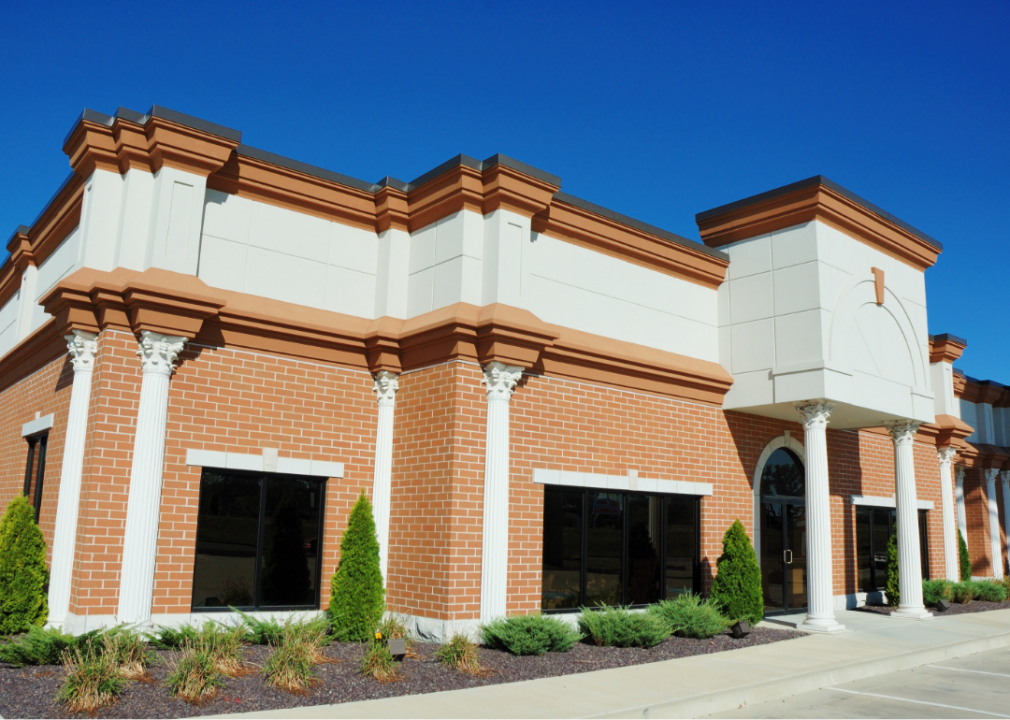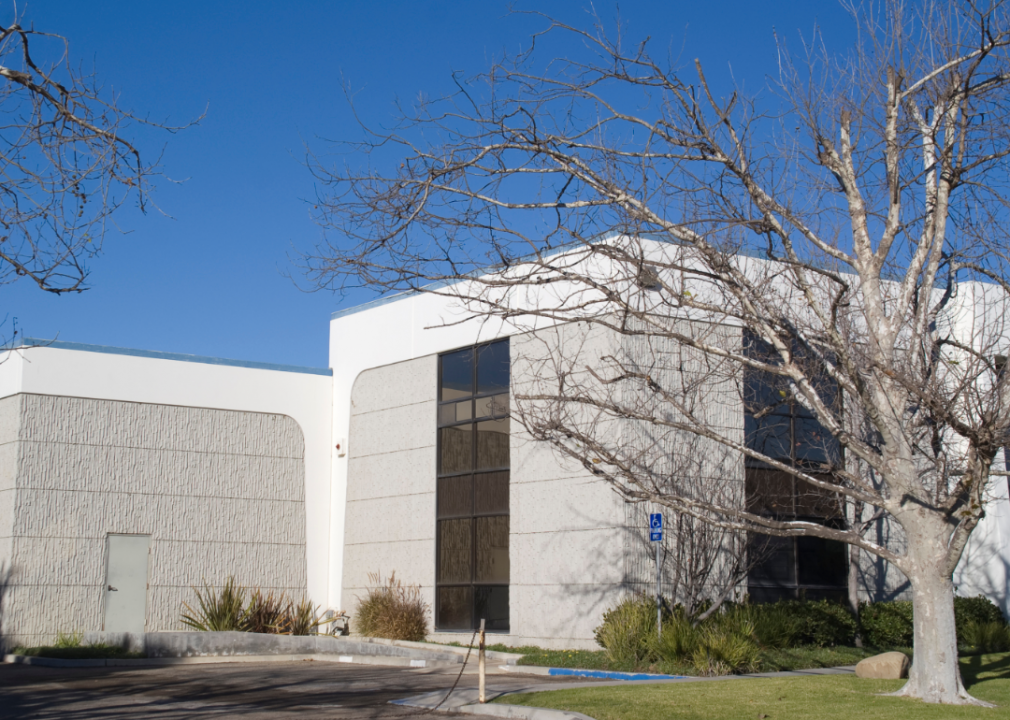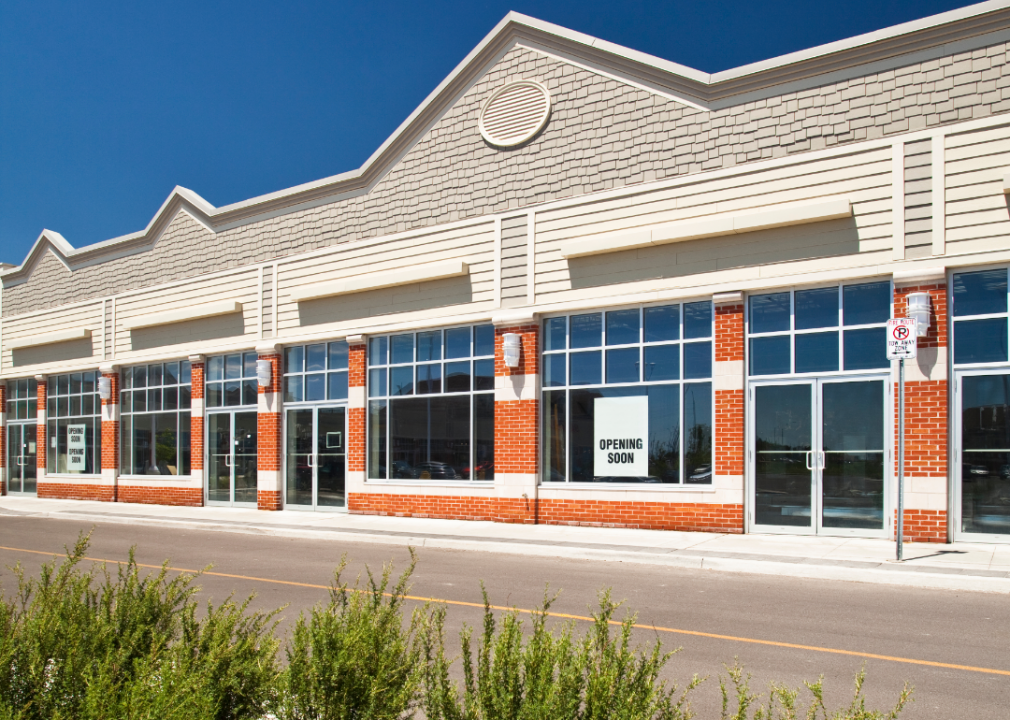20 essential terms for commercial real estate investing

Canva
20 essential terms for commercial real estate investing
If you’re looking for a way to build a solid financial footing and passive income streams, most experts will tell you that a long-term asset allocation strategy is key. There are lots of different investment avenues you can take to build wealth or just add some stability to your finances but pouring all of your spare cash into the tumultuous stock market or cryptocurrency could be a risky proposition. After all, it’s not uncommon for these markets to take a nosedive on occasion, and when they do, they take your cash with them.
That said, not all investments are so volatile. Some types of investments, like commercial real estate, can bring stability to one’s portfolio while offering significant upside potential if the investment plan is executed the right way. In fact, long-term commercial real estate investment returns can and often do outperform other types of investments.
As of 2021, the average 25-year returns on commercial investments were about 10.3% annually, according to a report from the National Council of Real Estate Fiduciaries. That is about 0.7% higher than the average 25-year annual return of 9.6% from the S&P 500 index. Low volatility asset classes like these offer investments that are less likely to change quickly—particularly for the worse.
There are tons of different commercial real estate opportunities to choose from, making it simple to diversify a portfolio. Office properties, multifamily rental properties, retail spaces, mixed-use buildings, and industrial properties are all commercial real estate investment options. Plus, there are a variety of ways to get into commercial real estate investing—and not all of them rely on an investor shelling out the cash and energy to purchase and manage a commercial building. Real estate investors can certainly buy and manage their own properties, but they also have the option to help directly fund other investors’ projects or buy into crowdfunding opportunities. This can help to further mitigate the risk that comes with buying and managing commercial real estate investments—and offers an easy return on the investment when the property performs as expected.
Before you dive headfirst into the world of commercial real estate investing, though, it’s important to understand the key terms that come along with it. To get you started, EquityMultiple compiled a list of 20 important terms that a commercial real estate investor—whether new or a seasoned pro—should know.
![]()

Canva
Accrued interest
Accrued interest in real estate is the amount of interest that has been earned on a loan over a certain period—whether on a mortgage loan or another type of financing—but has not yet been paid to the lender. Accrued interest can either be seen as an expense or revenue, depending on what side of the financing agreement an investor is on. For example, accrued interest is an expense for the borrower, who will eventually need to pay the interest to the lender, whether that’s on a monthly basis or at another point in the life of the loan. On the other hand, accrued interest is revenue for the lender, who will be paid the money for the interest accruing on the loan made to the borrower.

Canva
Capital stack
The capital stack is precisely what it sounds like—the stack of capital, or the layers of capital, that are used to purchase and operate a commercial real estate investment when there are multiple investors. The capital stack is what defines which of the lenders or invested parties will receive income or profits generated by a property—and in what order the funds will be disbursed.
The capital stack also outlines which lender has the first right to foreclose on the property if the equity owner defaults on the mortgage. This is important to investors because there is always a chance that a property won’t generate enough income to repay all investors or debtors, and the capital stack makes it clear who is prioritized for repayment when that happens.
More experienced investors will likely be interested in getting acquainted with the capital stack as well as reviewing the benefits of debt sharing—whether equity, preferred equity (share of upside and payment priority), mezzanine debt (representing a claim on a company’s assets), and senior debt (borrowed money with precedence over any other debt).

Canva
Cap rate
The capitalization rate, or cap rate, is a measurement used to estimate a commercial real estate investor’s potential return on an investment property over a one-year period. The cap rate assumes that the property is purchased with cash—not a loan—and helps investors to assess the potential profitability and return for an investment property. A few different formulas can be used to calculate the capitalization rate, but the most common cap rate measurement divides the property’s net operating income, or NOI, by the current market value. For example, for a property with an asking price of $1 million and an NOI of $125,000, divide the NOI of $125,000 by the $1 million asking price, which would equal a 12.5% cap rate. Generally, cap rates work as an inverse measure of risk: cap rates are typically lowest in gateway markets like San Francisco and New York where property values are considered safest.

Canva
Cash-on-cash return
Cash-on-cash, or CoC, return is a calculation used by real estate investors to measure the amount of cash that will be earned each year on a cash investment. This metric is used by investors to determine the potential annual returns on the money they invest in real estate projects, both now and in the future. The CoC return is typically used to help investors evaluate the potential annual yield of a certain real estate investment, but it can also come in handy for investors who want to compare the return profile of one investment to another. Most investors expect a good CoC return to be between 8% and 12%—but in some markets, what is considered a good return could be much higher or much lower.

Canva
Debt service coverage ratio
The debt service coverage ratio, or DSCR, is a metric used by real estate lenders to determine whether properties will generate enough cash flow for the borrowers to repay their loans. To calculate the DSCR, a property’s annual net operating income is divided by its yearly debt payment, and the resulting number is the DSCR. Most lenders will require a DSCR of 1.25x to 1.5x to issue a loan on a property. This metric doesn’t just help lenders to determine whether a loan can be issued, though; it also helps lenders determine what the maximum loan amount should be on a property.

Michael Shake // Shutterstock
Distressed assets
Distressed assets are properties that are priced below market value. Distressed assets are typically priced lower than the market value due to the seller having an immediate need for cash because the property is underperforming. This type of underperformance is typically caused by one of several issues: deteriorating physical condition, mismanagement, a flawed pricing structure, a short-term issue out of the owner’s control, macroeconomic shocks (like a pandemic), or too much debt due to an issue with the capital stack. Investors look for distressed assets because they offer an opportunity to purchase properties at a discount, which can lead to a higher return on investment. That said, there is a risk that the distressed asset needs expensive repairs or other fixes—so not every distressed asset will end up a good investment.

Canva
Equity multiple
When it comes to commercial real estate, the equity multiple is the metric used to determine how much money an investor will make for each dollar of the initial investment. To determine the equity multiple, an investment’s expected cash distributions are divided by the total equity invested. Let’s say, for example, that an investor initially invests $1 million into a project, and the cash distributions total $2.5 million (including repayment of principal). To determine the equity multiple, divide $2.5 million by $1 million, which would equal to an equity multiple of 2.50, or 2.50x. What that means is that for every $1 investors put in, they can expect to receive $1.50 back as a return on their initial investment, plus each dollar initially invested.

Canva
Internal rate of return
The internal rate of return, or IRR, measures an investment’s profitability.
The IRR represents the return percentage an investor might expect over that investment’s lifetime. The metric stands as the primary way real estate finance equity investments are judged. The higher the IRR, the more desirable the investment.

Canva
Loan to cost
The loan to cost, or LTC, of a real estate investment is a ratio that compares the financing amount of a commercial real estate project and the total cost of the project. This includes the purchase price and all other property-related costs—like any property liens, labor, materials, or permits. The LTC ratio is important because it’s one of the metrics that underwriters use to determine whether an investment project is fundable. The higher the LTC, the riskier the project is to lenders—and if an LTC ratio is too high, the real estate investment firm may have a tough time securing funding for the project. For example, if the total cost of a real estate investment is $2 million and the investor needs to borrow $1.8 million, the LTC would be 90%, which is an LTC that most lenders will avoid.

Canva
Mezzanine debt
Mezzanine debt is an extra loan or debt that an investor takes on to help finance a real estate investment project. This type of financing is important because it fills in the gap between a senior loan—which is the primary mortgage loan issued through a bank or lender—and the amount of equity that can be raised. For example, an investor purchases a property for $8 million and obtains a senior loan for $5 million, along with another $2 million in equity from investors. In this case, by obtaining a $1 million mezzanine loan, it would bridge the gap between the financing from the senior loan and equity and complete the capital stack necessary to make the property purchase.

Canva
Modern portfolio theory
Modern portfolio theory is a method of investing that risk-averse investors use to build a diverse portfolio with assets that will maximize profit while keeping the overall risk as low as possible. In other words, it’s a way to build a portfolio that maximizes the returns and minimizes the risks by diversifying the investments. This theory is used to build diverse portfolios for all types of investments, including real estate investing. For example, rather than investing in properties in the same neighborhood or market, investors using modern portfolio theory would spread their investments across a wide range of property types and markets. That way, if one of the investments in their portfolio underperforms due to changing market conditions in one area, the other diverse investments would protect the investor from having huge losses across the board.
A key pillar of modern portfolio theory is achieving low “cross-asset correlation”—diversifying across types of investments that don’t move in lockstep in terms of returns. For example, diversifying into private real estate, whose returns historically have not correlated closely with the stock market.

Canva
Net operating income
The net operating income, or NOI, is a calculation used by investors to determine how profitable an investment property could be given rent rolls, operating expenses, loan service, and other sources of revenue and costs. This helps investors decide whether a rental property is worth the cost of management and upkeep. The NOI also helps lenders to determine whether it makes sense to issue a loan on a property. To calculate the NOI, the operating expenses for the property are subtracted from the total amount of revenue the property generates before taxes are taken out. For example, a property with a $220,000 annual revenue that has $140,000 worth of operating expenses would have an NOI of $80,000 per year.
NOI is typically expressed on a pro forma: A document that enumerates all revenue and expenses over time as distinct line items.

Canva
Pari passu
The term “pari passu” is Latin for “equal footing.” It’s used in a number of different legal and business settings. When the pari passu clause is used in real estate, it dictates that the project’s investors will receive equal payouts and will have equal claim to the borrower’s assets if the borrower defaults on the loan. That doesn’t necessarily mean that all investors will receive the same dollar amount for their payouts, though. The investors will be paid out proportionally based on their initial investments, but the money owed will be paid out to all investors at the same time, as no investor ranks higher or lower than the others.

Canva
Preferred equity
Preferred equity is a type of capital repayment structure that allows a private investor to be prioritized over others for repayment on an investment. When private investors have a preferred equity position, they are put in line for repayment behind the senior lenders and other debt holders, but in front of other equity investors in the property. For example, let’s say an investor has purchased a multifamily building for $9 million dollars with the help of a $6 million loan from a senior lender, a $2 million bridge financing from a preferred equity investor, and a $1 million loan from other investors. At some point, the property underperforms and is sold for just $8 million. The senior lender would be repaid first, and the private lender with preferred equity is prioritized—leaving nothing leftover to repay the lenders with common equity in the property.
Preferred equity investors also typically hold some form of resource in the event of borrower default, often the right to force a sale of the property to recoup capital.

Canva
Preferred return
A preferred return is the set minimum return that specific types of investors—typically capital investors—must receive before others can be paid. The preferred return rate varies depending on the risk but is typically between 6% and 9% for real estate investments. Preferred returns are done to protect the returns for limited partners, who typically put up the majority of the money in a real estate project, meaning they take on the most financial risk. For example, if one capital investor is entitled to a preferred return of 9% on a real estate deal, that 9% return must be achieved and paid to the investor before any of the other investors can be paid on the deal.

Canva
Pro forma
The pro forma is a type of financial document that helps investors determine what the potential profit is on a property. This document is extremely important for investors because it includes both the real-world property information—the net operating income and historical and current rental rates, and the projections—the ongoing costs of repairs and upkeep and the future rent potential. This gives investors a clear idea of what the financials could be on the property, which is vital when making decisions on investments. It allows them to see how any fluctuations in performance, such as low occupancy, could affect the financials.

Canva
Real estate crowdfunding
Real estate crowdfunding is very much what it sounds like: a method of pooling capital from self-directed individual investors to fund a real estate investment. As with other types of crowdfunding, real estate crowdfunding allows individual investors to participate passively in investments that they otherwise wouldn’t have access to, at relatively low minimums. Capital pooled from individual investors is then used to purchase or fund the real estate project. The idea behind real estate crowdfunding is that self-directed individual investors can allocate to the types of illiquid commercial real estate that were previously accessible only to institutional investors and the ultra-wealthy. At the same time, “sponsors”—the real estate investment firms seeking capital for their projects—can raise capital more efficiently and flexibly through real estate crowdfunding platforms. It’s not unusual for a crowdfunded real estate project to have a minimum investment of just $5,000, which is extremely low in comparison to the capital required to buy into traditional real estate investment projects.

Canva
Real estate due diligence
Real estate due diligence is a framework by which investors “do their homework” on a potential investment property (and potentially the sponsor, or lead investor) as they determine whether or not to invest. The depth and timeframe for real estate due diligence varies, but the goal is to determine whether the property and investment are sound. Real estate due diligence may refer to either the sponsor’s (or anchor investor’s) evaluation of the property in considering purchase, or LP investors considering whether to invest alongside the sponsor in the property. Therefore, the diligence process may examine the following elements of the real estate investment, among others: Rental or sales comparables (“comps”) in the neighborhood and metro; the physical condition of the property; vacancy rate, rent rolls, and other aspects of the property’s pro forma; demographic trends and demand drivers in the metro; capitalization (cap rate) dynamics in the metro; and, in the case of an LP investor deciding whether to invest alongside a given sponsor, the LP investor may examine the track record and operating history of the sponsor.

Canva
Triple net lease
A triple net lease is a type of commercial lease agreement in which the tenant agrees to pay all the associated expenses with a property. With this type of lease, the tenant is typically responsible for the property taxes, the maintenance on the property, and the cost of insuring the property—as well as other routine associated costs, such as the utilities and rent. A triple net lease can be a smart way for tenants to lease at a discounted rate, as these leases are typically offered at a lower rate since the tenant is also footing the bill for the extra costs. These types of leases are also popular with commercial investors, as they are a relatively low-risk way to lease commercial properties to tenants. Hence, triple net (“NNN”) lease properties are often appealing for LP investors or real estate crowdfunding investors seeking lower risk opportunities.

hanohiki // Shutterstock
Value add real estate
Value add real estate is another kind of real estate investing strategy in which properties are bought and sold that need corrective action to reach their full potential value.
These investments may include buildings that have undergone neglect, deferred maintenance, subpar facilities and amenities, less-than-average occupancy, or low lease or rental rates. These properties are typically riskier for investors because the repairs require more capital and sweat equity but can offer better returns than other types of properties.
When getting started in real estate investing, coming to the table with enough knowledge of the industry will put the investor at an advantage. Knowing how the market works and how to best handle real estate investments with the lowest volatility will make for an extensive—and hopefully worthwhile—portfolio.
This story originally appeared on EquityMultiple
and was produced and distributed in partnership with Stacker Studio.



